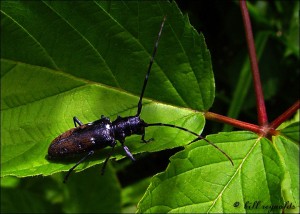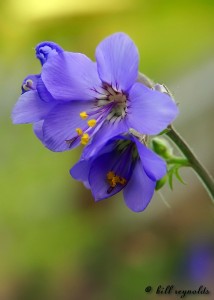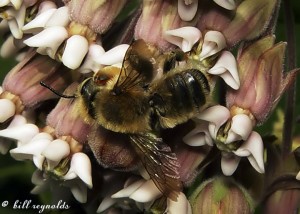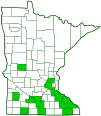The whitespotted sawyer (Monochamus scutellatus scutellatus) is a common, widespread, long-horned beetle often found in fire-damaged coniferous and mixed forests. It is most easily identified by a small white spot between the bases of its wings. The larva of this beetle spends two years boring through pine, spruce, fir, or tamarack before emerging as an adult. While the damage it causes is not sufficient to kill the tree, the bore hole it makes allows various fungi, which can be fatal, to enter the tree.
Monthly Archives: February 2014
Western Jacob’s Ladder
There are only five known locations where western Jacob’s ladder (Polemonium occidentale ssp. lacustre) can be found today. Three of those locations are in Minnesota and two are in Wisconsin. The species is restricted to openings in conifer swamps that have a blanket of sphagnum and other mosses and are dominated by northern white cedar and sometimes tamarack and/or black spruce. It rises on a single erect stem. The leaves have up to 27 narrow leaflets that resemble a ladder. The blue flowers can be seen from late June to July.
Leafcutting bee
The leafcutting bee (Megachile latimanus) is a common and widespread solitary bee found between May and October in dry areas of savannas, grasslands, and agricultural fields. It has a stout, entirely black body densely covered with mostly pale yellow and black hairs. Unlike most bees the pollen-collecting hairs on leafcutting bees are on the underside of the abdomen, not on the legs.
This bee gets its common name from the nest-building female. She uses her enlarged, scissor-like mandibles to cut disks from leaves and uses the disks to create individual nests for her eggs.
Plant Distribution Maps Updated
In May 2013 the Minnesota DNR updated MNTaxa: The State of Minnesota Vascular Plant Checklist. It is now available on the DNR Website. It contains a statewide distribution by county map for each species listed. For the past four weeks I have been updating all plant distribution maps to include the MNTaxa data as well as data from the Bell Museum of Natural History Herbarium, Flora of Minnesota, Specimen Database.
The project was completed today. All 786 plant distribution maps have been updated.





